Water in the house from the well with their own hands: the
The topic of this article is to supply water to a house from a well. We will find out what pressure should create a pump; which pumps are preferred for work in the well and how they connect to the house water system. In addition, we will touch upon a very curious concept - an air conditioning system that uses well water to cool the room.
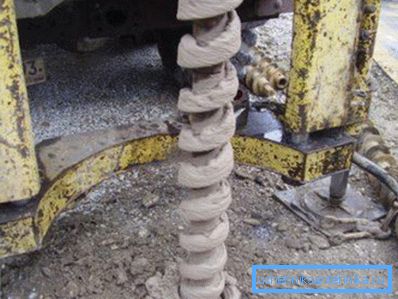
Head pressure
Obviously, the water in the house from the well must be supplied with excessive pressure.
There are at least two reasons for this.
- Water has to overcome the hydraulic resistance of pipes and fittings, which is associated with the inevitable drop in pressure.
By the way: plastic and metal-plastic pipes of all types have a much lower hydraulic resistance than steel (including galvanization). In the case of black steel, the characteristics of pipes decrease significantly during operation due to corrosion and accumulation of lime deposits in the water mains.
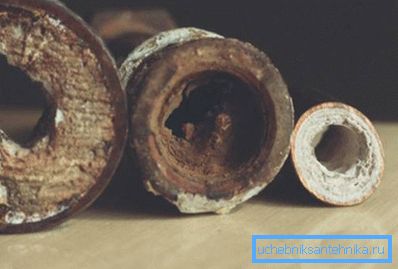
- Overpressure is necessary for normal operation of the faucets and fittings of toilet bowls. If water will flow to the inlet valve of a modern tank by gravity, it simply will not open. However, the old domestic tanks are able to work without excessive pressure.
So, what pressure should create a pump?
Payment
The order of calculation is quite simple.
- The depth of the well is taken as the basis. If for some reason there is no documentation on it, it is easy to measure with the help of a load on a rope. Note: the pump is usually suspended at a distance of at least a meter from the bottom, which protects it from falling into the impeller sludge and sand.
- 30 meters of overpressure is added to the depth of the well in meters. Thus, we are guaranteed to provide the necessary pressure on all plumbing fixtures.
- The result is further increased by 10 percent to compensate for unaccounted losses at fittings, turns of the pipeline, etc.

Let's find out what the pump head should be for a 70-meter well: (70 + 30) x1.1 = 110 meters.
Exceed the calculated value is not worth it for two reasons.
- This will cause a waste of energy.
- Excessive pressure will jeopardize the integrity of the water supply system, in the first place - flexible connections to the mixers and tanks.
Pump selection
What kind of pump should transport water to the house from the well? What are the selection criteria?
The modern market offers several designs of borehole pumps.
We list them with key operational features.
- Devices for outdoor (surface) installation are readily available for repair and maintenance, unlike all submersibles; their problem is that these products can work only when the distance from the surface to the water mirror is not more than 10 meters.

- Swirl Pumps relatively cheap; however, due to the minimum (in a fraction of a millimeter) gap between the impeller and the casing, they are extremely sensitive to impurities. When the content of suspended matter is more than 30 grams per cubic meter, it is better to prefer other solutions.
- Screw - on the contrary, they are able to transport pulp with sand content up to 50%. The price of this unpretentiousness is low productivity and efficiency, which does not exceed 70% of the best models.
- Diaphragm pumps extremely cheap and able to create a relatively decent pressure. Their main disadvantage is that the membranes wear out mechanically during the operation: the device life between repairs does not exceed 2 years.
- Finally, centrifugal pump - this is a further development of the idea of the vortex. The pressure is created in steps, with several impellers. Due to the large gap between them and the body, suspended solids in the amount of up to 150 g / m3 with a particle size of up to 2 mm are permissible; devices of this type are able to create pressure up to 250 meters and above.

What else should you pay attention to when choosing a device that will provide water to the house from a well?
Performance ideally should exceed the peak consumption of the family, but be less than the flow rate of the well. The second requirement is due to the fact that the dry run (work in the absence of water) is the main enemy of pump mechanics: water provides cooling for the motor.
Reference: for a family of 3-4 people, a pump with a capacity of 30-50 liters per minute is usually taken. If water from a well is used for irrigation, the design capacity is doubled.
The diameter of the pump must match the diameter of the well. Excessively large clearance between the casing and the walls of the casing will worsen the cooling of the electric motor; lack of clearance will create problems when lowering and raising the device for repair or replacement. In most cases, a pump with a diameter of 4 inches (an inch is 2.54 cm) and a casing with a diameter of 125 mm is used.
It is better to pay attention to eminent manufacturers (Wilo, Grundfos, Pedrolo and their ilk). The instruction is connected with higher fault tolerance of branded equipment and with characteristic developed networks of service centers.
Input
How does the water supply to the house from the well look like?
In this capacity, an ordinary polyethylene pressure pipe is used. To be precise, its material is HDPE (low pressure polyethylene is noticeably stronger than cheaper LDPE). The diameter corresponds to the diameter of the pump nozzle; method of attachment to the nozzle - compression fitting.
The main thing that you should pay attention to when doing the entry with your own hands: the water supply to the house from the well is performed below the ground freezing level. In this case, we are guaranteed not to let the pipe freeze in the peak of cold weather.

What to do if it is impossible to dig a trench of the desired depth (rocky soil, permafrost, etc.)?
- The input is insulated. For this purpose, you can use foam or polyurethane shells, wrap the pipe in polyethylene foam or assemble a box covered with expanded clay: the choice of the type of insulation is at your discretion.
- A self-regulating heating cable is installed inside the insulation, which will prevent the water from freezing even in the absence of a tap. The cable is attached to the pipe with tape, tape or clamps.
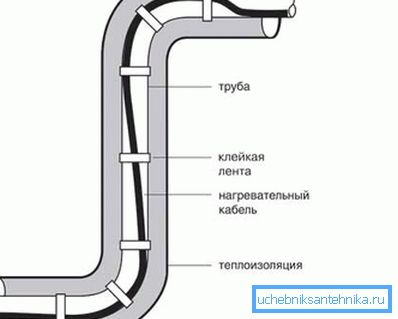
A special case
Are there any advantages in terms of performance well for water in the house?
One can argue for such a decision, and against it.
- The probability of freezing input tends to zero. In the basement of the insulated structure, the temperature does not drop below zero, even in the most severe frosts. Moreover, it remains stable even if the house is not heated: the ground, as we remember, has a consistently positive temperature, but from cold air it is in our case thermally insulated by walls.
- You can forget about digging a trench.
- Not only that: with the same level of the aquifer, the wellbore drilled from the excavation pit will be somewhat shorter, which will save you a certain amount on drilling operations.
Some advantages, is not it?
Alas, not so. The catch is that when the wellbore is deformed, the pump falls or the casing is damaged, repair work often comes down to re-penetration by the drill. As you understand, in the basement of a dwelling house this is made impossible.
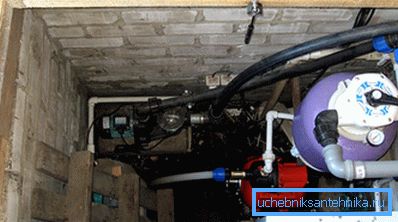
By the way: it is usually recommended to drill no closer than three meters from the walls of the house. The restriction is associated with the probability of subsidence of the basement when sampling the soil near it.
Conditioning
Is it possible to organize the cooling of the house with water from a well?
We present several solutions of varying complexity and efficiency with their brief assessment.
Heat pump
The circuit uses a water-air heat pump. Its heat exchanger transfers excess energy to water, which is taken from one well and merged into another. Due to the stable temperature of groundwater throughout the year, the heat pump can be used both for summer room conditioning and as a winter heating device.
The solution is very practical and universal, but its shortcomings should be written down:
- High cost. Heat pump will cost 150-200 thousand rubles; the second well also does not please the owner with cheapness.
- High well flow rate requirements. In order to divert 14 kWh of heat, you need to heat three cubic meters of water by three degrees. So far in an hour, not every underground aquifer will give away.

Fancoil in the water supply system
An incomparably cheaper solution is to open the cold water system with a fan coil (heat exchanger with forced airflow). Why them? Airflow allows you to increase heat transfer at a fixed radiator area.
Hint: In the role of the fan coil is often used old indoor unit air conditioner. Among other things, its use in this quality will simplify the removal of condensate: all the necessary tubes and openings in the body are already present.
Why such a scheme, despite the simplicity, is not very popular? Because of the ridiculous efficiency. With a reasonable consumption of cold water, the amount of heat that will be taken from the air in the room will be about a kilowatt-hour per day.
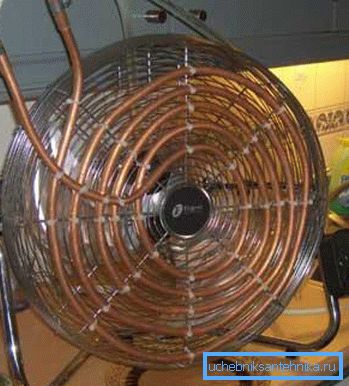
Circulation circuit
A much more reasonable solution is to make a circuit with a circulating fan coil.
- A heat exchanger is placed in the well above the pump. It is desirable - copper, with frequent fins: thus, we will provide maximum efficiency with a minimum size. Often, however, it is simply a U-shaped polyethylene pipe.
- The heat exchanger is connected to the fan coil by a pair of lines (usually from the same polyethylene pipe).
- The lines are broken by the assembly of the circulation pump, the safety group (pressure gauge, expansion tank and safety valve) and the valve for filling the circuit.
The cooling efficiency for a 40-meter well may be 1.5-2.5 kilowatts. In this case, the power consumption will be less than the most economical air conditioner - 60-75 watts.
Conclusion
As always, the reader will find additional material in the video in this article. Successes!